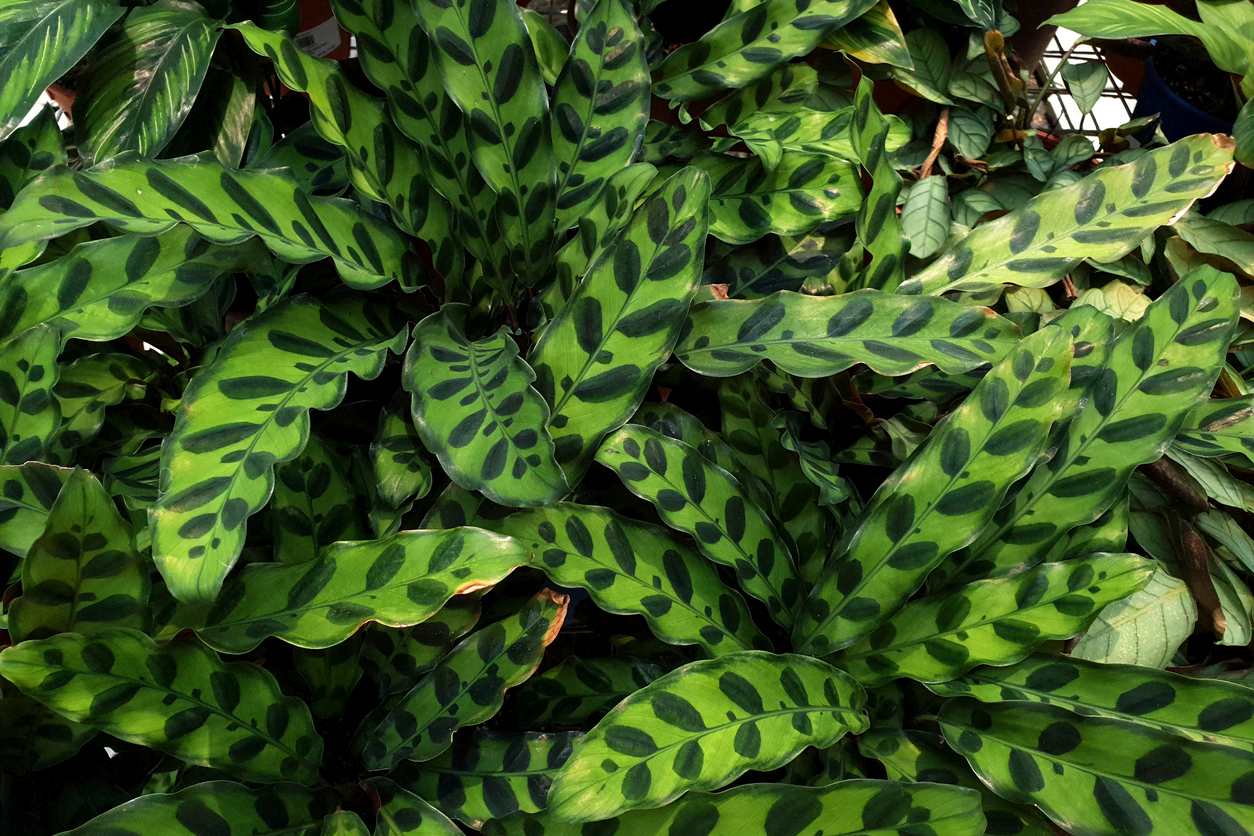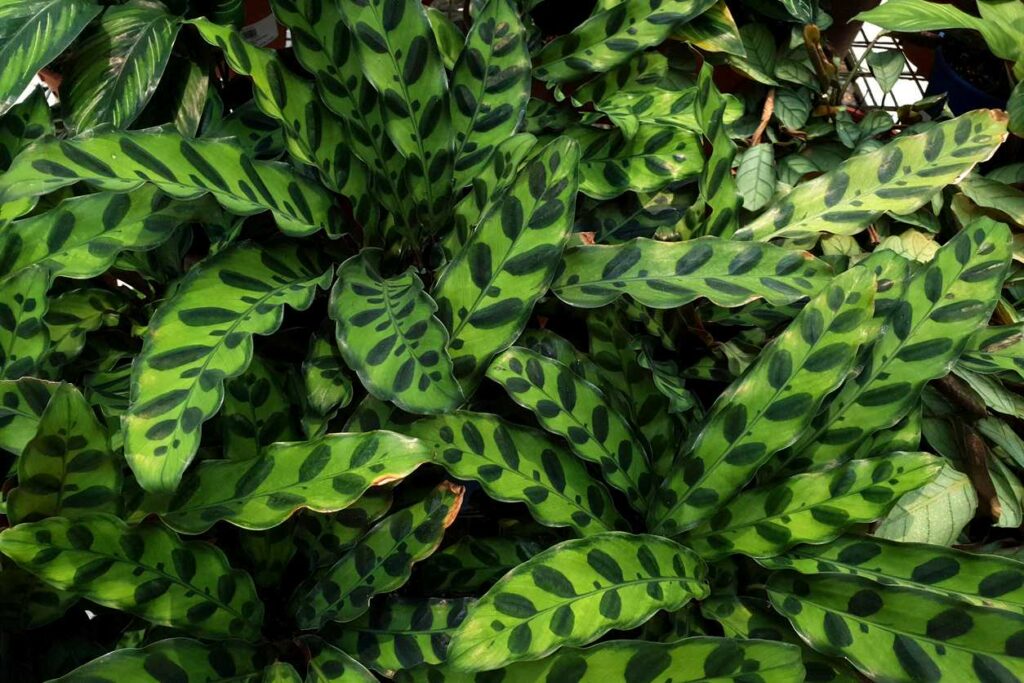Rattlesnake Plant Care: How To Grow Rattlesnake Houseplants
When faced with such a wide variety of plants to grow in your garden, sometimes it’s bewildering and time-consuming to choose the right one for you. This is why we always pick plants that have some striking qualities and are easy to grow and care for even for a novice gardener.
The Rattlesnake Plant (Calathea lancifolia) fits the bill and delivers in spades. From a very unique shape to lurid and enticing color combinations, this is one plant that deserves its place in every home. It’s an essential component in your tropical garden and even on its own, it serves as the focal point in any corner in your living room.
All about the Rattlesnake Plant
As a native of Brazil, the rattlesnake plant has distinctly shaped leaves that have all the appearances of a sword blade. It’s accustomed to hot and humid environments and would thrive in similar climates. First discovered in the Amazon Rainforest, the plant blooms in the early summer months.
The first thing that gets your attention about the rattlesnake plant is the leaves. They are slender and long which reminds you of the blades. Each leaf is about 30 inches long when fully developed. So we’re talking about a tall plant that spreads itself around and demands attention.
But it’s not just the length or sharp shape that makes the leaves and the whole plant stand out. The color combinations of red and greenish-purple along with the patterns and wavy green edges all contribute to the fine figure this plant cuts. You can’t help but notice the leaf-like markings on the inner side of the leaves as if each leaf was carrying smaller leaves.
Grown mainly indoors due to its temperature and humidity constraints, the Calathea lancifolia is a delight in any setting you put in. You can keep it in a pot as a floor plant in the living room. Just make sure it gets enough light from a window nearby. The patterns on the leaves and the combination of deep green and purple colors complement your decor and interior designs.
How to Grow Rattlesnake Plant
Even though the rattlesnake plant has many similarities with cactuses, those similarities are limited to the shape and size of the leaves. While cactuses are hardy desert plants that relish the rough and tumble of the harsh conditions in the dry desert, the rattlesnake plant is all about humidity and abundance of water.
Temperature and Light
Since this is a plant that hails from the tropical forests of Central America, it needs plenty of light and high temperatures to thrive. However, direct sunlight doesn’t help and might have adverse effects on the plant. So make sure it gets about 6 hours of daylight without being exposed to the sun. If you keep it indoors, then put it in a window that faces south to get enough light all day long.
As such, and with USDA hardiness zones between 11 and 12, this plant can only survive outdoors in the warmest and most humid regions of Florida and Southern California. If you live anywhere else in the USA, then indoors is the best environment for the rattlesnake plant. Maintain high temperatures between 75 and 80 degrees F at all times.
Water
Moisture is essential for the survival of the rattlesnake plant. Since the Amazon Rainforest gets rain all year round, your home should have high humidity levels and the soil needs to be moist at all times. To maintain the ideal levels of humidity, spray the leaves with water on hot and dry days to keep the leaves and flowers looking fresh.
Irrigation should be regular. Once every couple of days during the summer months and twice a week in cold seasons. Just remember that tap water doesn’t suit this Amazonian plant and leads to brown leaf tips. You should use reclaimed water for irrigation.
Soil
A rich and well-drained soil is ideal for rattlesnake plants. To help you get the right balance, add one portion of peat moss to every two portions of perlite. This helps with water retention, aeration, and keeps the soil loose, the way the plant likes it.
Keep in mind that the Calathea lancifolia needs to be repotted every year without fail. The root system grows quickly and if it’s kept crammed in the same small pot it will wither and die. Use fresh soil with every repotting and add the right amounts of peat moss and organic matter.
Fertilizer
Along with the peat moss and mulch, you add to the soil, fertilizers are needed during the growing and flowering cycles. Use a balanced fertilizer or organic compost once a month from April until August every year. Once the flowers fade and the plant goes into dormancy stop using fertilizers and cut down on irrigation.
Rattlesnake Plant Care
The two challenges that you’ll face in caring for the Calathea lancifolia are the hot temperature and high humidity. The rest just takes care of itself. This is not a houseplant that needs pruning or constant care. That said, you still need to pay attention to the following litany of items that fall under the category of care and maintenance.
Grooming
Once every blue moon, you’ll notice that one of the leaves doesn’t look so good. It’s withered and pale and about to fall. Give it a helping hand and remove it from the plant to make room for new leaves to appear. Otherwise, you won’t have to worry about falling flowers or dead buds. The Calathea lancifolia doesn’t flower indoors.
Propagation
Once you get the hang of caring for the Calathea lancifolia, soon you’d want to have another one to put in the other room. As we have seen, it doesn’t require much in the way of care and maintenance. The best way to propagate it is by division. As for the best time, it’s when you’re repotting the plant.
Remove each leaf at the stem and plant it immediately in a separate pot. Cover the pot with a plastic bag to maintain humidity and temperature. Water it and wait for signs of growth. Then you can remove the plastic bag and put the pot in a place that gets lots of light.
Pests and Diseases
One of the good things about the Calathea lancifolia is that it has natural immunity against many diseases that afflict more delicate plants. No known diseases affect it and since it doesn’t secrete any sap or juices you won’t see bugs or insects looming over the pot.
That said, some bugs don’t need an invitation to invade a healthy plant and ruin its beauty. Some of those uninvited party crashers include mealybugs, aphids, and spider mites. They’re the bane of many garden plants and you might need a pesticide or organic neem oil to get rid of them. They usually appear during the winter months drawn by the humidity and high temperature around the plant.
You can wash the plant if you see any sign of these bugs. Use water and soap to wash the leaves thoroughly and remove all traces of the bugs. If that doesn’t work, try chemical pesticides for better results.
Troubleshooting Potential Rattlesnake Plant Problems
Hardy as they are, rattlesnake houseplants are not immune to the ravages of time or the changing conditions. Let’s face it, you will not always remember to irrigate the pot during the winter months, and sometimes you might water the plant more than you should. That’s when you start to see signs that the plant is not doing well. Signs such as
- Yellow Leaves: the leaves of the plant turn yellow as they get older. This often happens to the leaves at the base of the Calathea lancifolia. This is no cause for concern unless you see more leaves turning yellow. This could be caused by overwatering.
- Limp Stems: It’s not normal for the plant’s stem to become limp or bend under the weight of the leaves. This is the result of overwatering the plant during its dormancy in the winter. Stop watering the pot and wait for it to become solid again.
- Leaves Curling: This is the exact opposite of the previous two issues. It happens when the soil goes dry and the plant struggles with dehydration. Check the soil and water the plant immediately. Use a liquid fertilizer to nourish the leaves back to health.
- Brown Leaf Tips: We discussed this issue when talking about watering the Calathea lancifolia. This is often caused by low humidity in the room and/or lack of water. Spray the leaves with water to increase humidity and don’t let the soil go dry.

